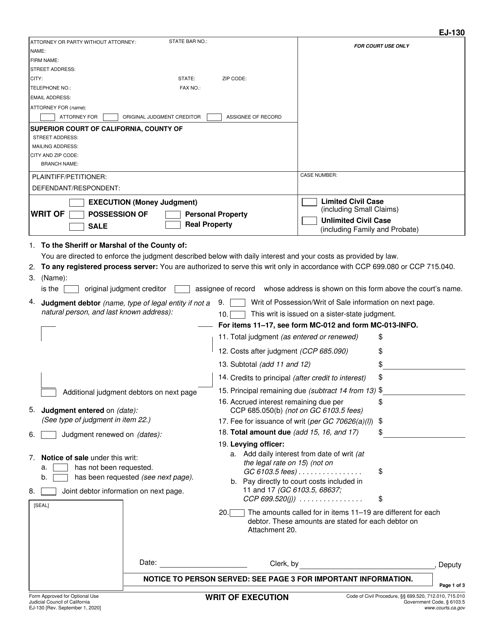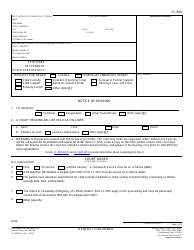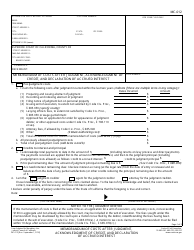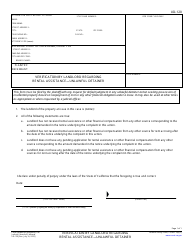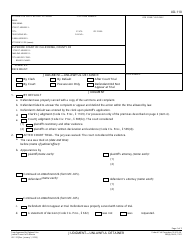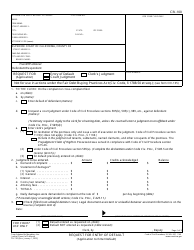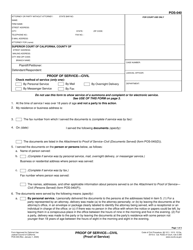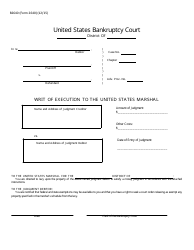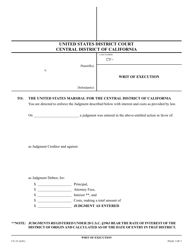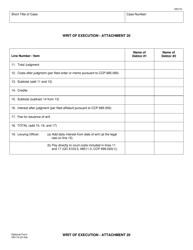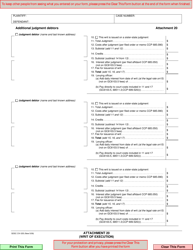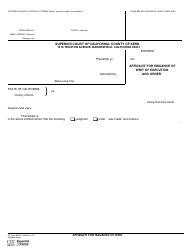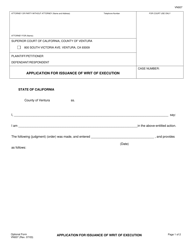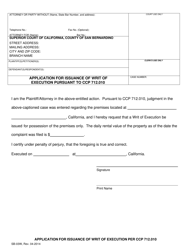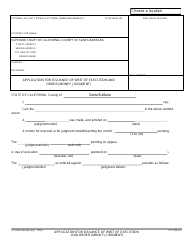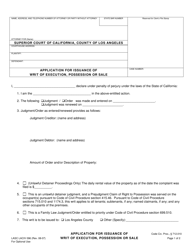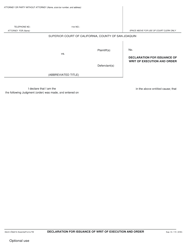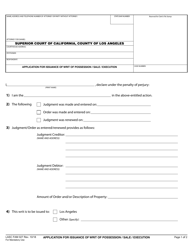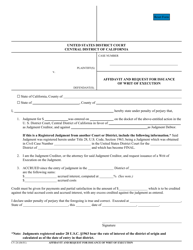Form EJ-130 Writ of Execution - California
What Is Form EJ-130?
This is a legal form that was released by the California Superior Court - a government authority operating within California. As of today, no separate filing guidelines for the form are provided by the issuing department.
FAQ
Q: What is Form EJ-130?
A: Form EJ-130 is a Writ of Execution in California.
Q: What is a Writ of Execution?
A: A Writ of Execution is a court order that allows a judgment creditor to collect the money owed to them by seizing and selling the debtor's property.
Q: Who can use Form EJ-130?
A: Form EJ-130 can be used by judgment creditors who have obtained a money judgment in California.
Q: How do I fill out Form EJ-130?
A: You need to provide information about the judgment, the judgment debtor, and the property to be seized. Make sure to follow the instructions provided.
Q: Can I use Form EJ-130 to collect money from a bank account?
A: Yes, Form EJ-130 can be used to levy on a judgment debtor's bank account.
Q: Is it necessary to hire an attorney to use Form EJ-130?
A: No, you can fill out and file Form EJ-130 yourself. However, consulting with an attorney may be helpful to ensure you follow the correct procedures.
Q: How long does a Writ of Execution last?
A: A Writ of Execution is generally valid for 180 days from the date it is issued.
Q: What happens after I file Form EJ-130?
A: Once the court approves the Writ of Execution, it will be delivered to the sheriff's office or a registered process server who will enforce the judgment by seizing and selling the debtor's property.
Form Details:
- Released on September 1, 2020;
- The latest edition provided by the California Superior Court;
- Easy to use and ready to print;
- Quick to customize;
- Compatible with most PDF-viewing applications;
- Fill out the form in our online filing application.
Download a fillable version of Form EJ-130 by clicking the link below or browse more documents and templates provided by the California Superior Court.
